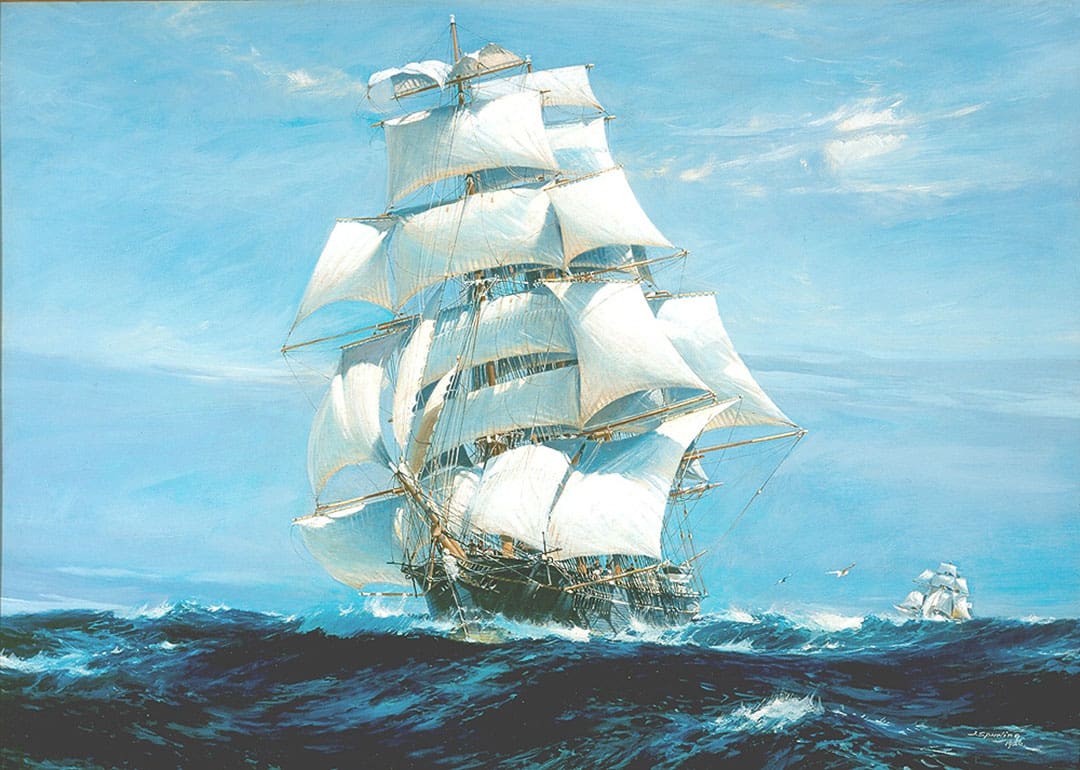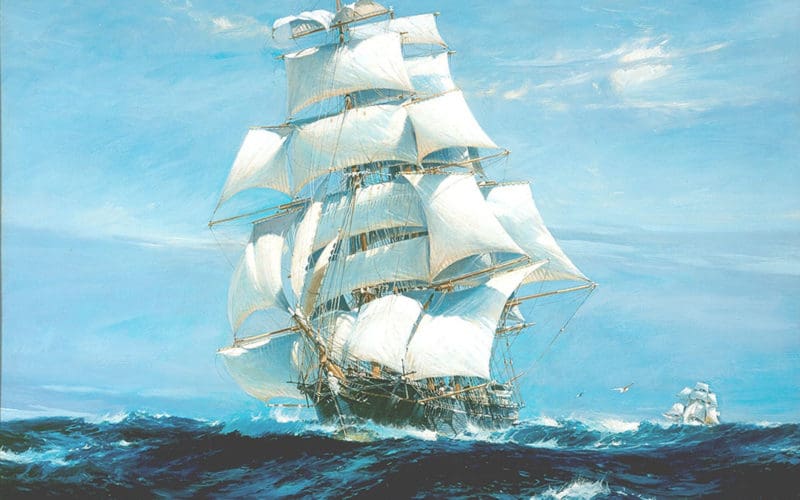
clippers Ariel and Taeping.
From 1700 to 1834, the British East India Company held a monopoly in the colonization of Asia, competing only with the Dutch East India Company. It was founded in 1600 to trade in the Indian Ocean region, India, Southeast Asia, and China.
The East India Company controlled basic commodities: silk, cotton, India dye, sugar, salt, tea, and opium. The tea monopoly was nullified by the king in 1834, opening up the China tea market. It was obvious that the faster ships could arrive in London from China, the higher the price of tea.
This realization, along with the development of clipper ships in the US in the 1840s, pushed British designers into lofting more and more radical clipper ships with finer lines. There was a great economic advantage as well as bragging rights to the company whose tea ship that arrived first.
It was only natural that these new ships would find themselves in each other’s company sailing with a cargo of tea from China to the London docks. In the long history of the tea trade, the Great Tea Race of 1866 stands out as the most memorable event.
Five ships loaded cargo in Foochow they were Taeping, Sedrica, Ariel, Fiery Cross and Taitsing. Tea was usually lightered out to the ship and stowed in bamboo chests.
Fiery Cross, Taitsing and Serica departed Foochow on May 29th and Ariel, and Taeping sailed on the 30th. A little more than three months later on September 6th — after racing nearly 16,000 nautical miles — Taeping docked 28 minutes ahead of Ariel and two hours ahead of Serica. Fiery Cross arrived 28 hours later and Taitsing, the following day.
The route from the tea ports in China to England were long and dangerous. Ships sailed through the South China Sea, across the Indian Ocean, doubled the Cape of Good Hope, headed north and west to the Azores, then sailed up the English Channel before turning into the Thames estuary and heading upriver to London.
And after all that distance the ships were sailing within sight of each other the full length of the English Channel. It was only because Taeping drew less water and was able to cut a few corners that it was able to tie up at the London docks 28 minutes ahead of Ariel. These were the golden days of clipper ships. With the completion of the Suez Canal the tea trade was taken over by steamships. Clippers were relegated to sailing to Australia returning with cargoes of wool.
Let’s join Taeping as she races through the Indian Ocean. The captain is going to do a noon sight to get his latitude as he is racing along at 15 knots while still a few days out from the Cape of Good Hope.
We are doing a lower limb sight of the sun. The height of eye is 15 feet. The day is June 10. We will use the 2022 Nautical Almanac. The DR position is at 15° 20’ south by 75° 10’ east. The Hs is 51° 28’.
A. Find GMT of LAN at 75° 10’
B. Find Ho
C. Find latitude
Answers:
A. GMT of LAN is 06:58:20
B. Ho is 51° 39.4’
C. Latitude is 15° 19.7’ south

